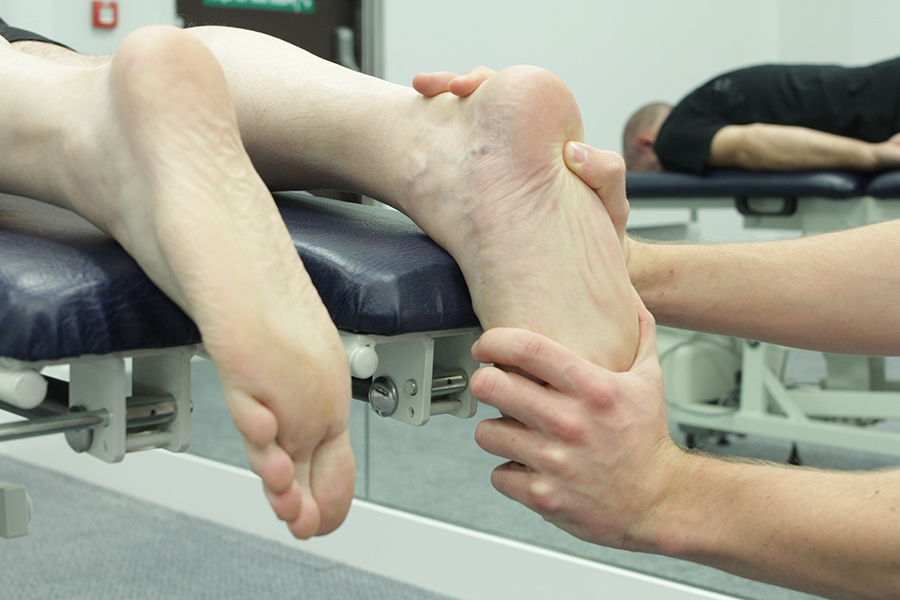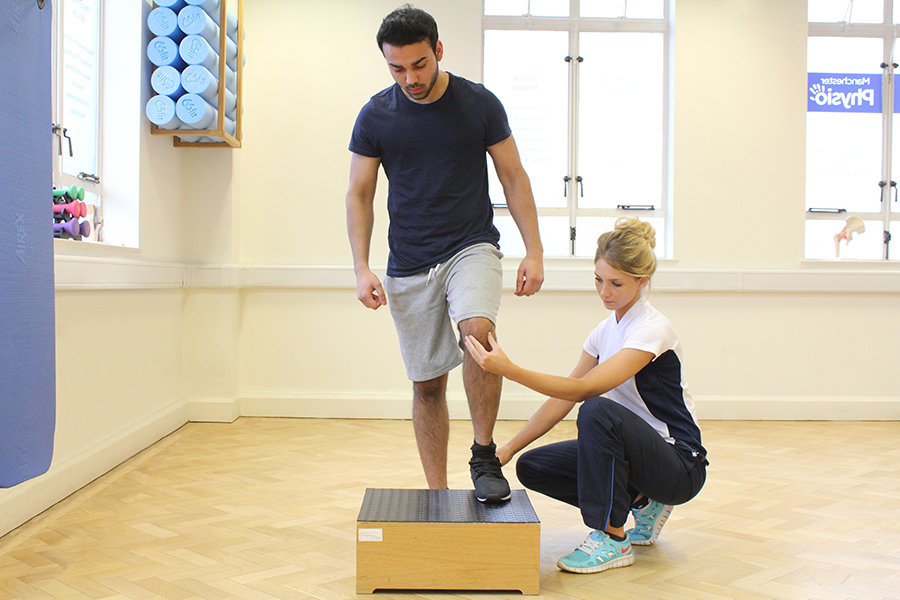Avulsion fracture of the base of the fifth metatarsal
An avulsion fracture is a fracture that occurs at the base of the fifth
metatarsal, which is on the outside of the mid foot. An avulsion fracture
occurs when a fragment of bone at the base of the fifth metatarsal is
pulled away by the tendon that attaches there. An avulsion fracture of the
fifth metatarsal typically follows an injury that forces the foot.
If you suspect you have fractured your foot it is important that you visit
your GP or A&E so that this can be X-rayed and, if necessary,
immobilised with a cast. Following immobilisation podiatry can help you by
improving the overall function of the foot, and by reducing any pain or
stiffness in the joints. The benefits of podiatry following an avulsion
fracture to the base of the fifth metatarsal are a quicker return to normal
activity, a reduction in pain, improved foot function, and a reduction in
the risk of future injury.
What is an avulsion fracture of the fifth metatarsal?
An avulsion fracture to the base of the fifth metatarsal is the most common fracture affecting the fifth metatarsal. The fifth metatarsal is a long thin bone on the outside of the foot that connects the mid-foot to the little toe. An avulsion fracture to the base of the fifth metatarsal occurs when the muscle that connects at this point (peroneus brevis) pulls off a piece of bone.

What causes an avulsion fracture of the fifth metatarsal?
An avulsion fracture to the base of the fifth metatarsal occurs when a piece of bone is pulled off by the tendon that attaches there. An avulsion fracture typically occurs following forced inversion of the foot, or 'rolling in' on the ankle. This type of injury puts the peroneal tendon under increased tension, forcing it to pull on its attachment at the base of the fifth metatarsal, causing the bone to break as it is pulled away.
What are the signs and symptoms of an avulsion fracture of the fifth metatarsal?
If you have an avulsion fracture to the base of the fifth metatarsal you will experience one or more of the following, after a twisting injury, similar to an ankle sprain:
- Pain on the outside of the foot
- Swelling on the outside of the foot
- Tenderness at base of fifth metatarsal
- Discomfort on resisted eversion of the foot
- Limping
How is an avulsion fracture of the fifth metatarsal diagnosed?
If following a thorough assessment at Chiropody.co.uk an avulsion fracture to the base of the fifth metatarsal is suspected an x-ray will be required to confirm the diagnosis.
Benefits of podiatry for an avulsion fracture of the fifth metatarsal
Podiatry can benefit you if you have had an avulsion fracture to the base
of the fifth metatarsal once casting or appropriate immobilisation has been
removed.
The benefits of podiatry following an avulsion fracture to the fifth
metatarsal include:
- Improved lower limb and foot mechanics
- Improved gait
- Decrease in pain
- Decrease in stiffness
- Improved strength and flexibility of the foot and ankle
It may be that poor biomechanics contributed to your avulsion fracture to
the fifth metatarsal, if this is the case, following a biomechanical
assessment orthoses can be prescribed to correct any abnormal mechanics and
prevent future injury. For example, orthoses can be prescribed that prevent
the ankle from 'going over', a contributing factor in avulsion fractures to
the base of the fifth metatarsal. Orthoses are often prescribed alongside
strengthening exercises and a stretching programme. Strengthening and
stretching exercises will be of benefit to you following casting because
the muscles around the ankle will have been out of use; the exercises
therefore improve overall muscle balance, making the ankle strong and
flexible so that it is better able to resist future injury.
Casting can also make the joints of the foot stiff; this is because they
have been held in a fixed position. Podiatry can benefit stiff and painful
joints with mobilisation, the aim of which is to increase the movement at
the joints in order to improve function, improve gait, and reduce pain.

What would podiatry for an avulsion fracture of the fifth metatarsal involve?
When a fracture has occurred at the base of the fifth metatarsal it takes time for that bone to heal. In order to aid healing and hold the fractured bone in place a cast is often applied so that it is immobile. When the fifth metatarsal has been immobilised in a cast, following its removal the muscles and tendons and ligaments that have been immobilised become tight, and the joints become stiff due to their inability to move. Podiatry can help you at this stage by implementing a treatment plan designed to improve the muscle strength and joint flexibility in the foot and lower limb, as well as the overall mechanics of the foot. Treatment is subject to a thorough assessment and is individual to you, but may include:
- Orthoses
- Strengthening programme
- Stretching Programmes
- Balance exercises
- Manipulation / mobilisation
- LIPUS
- Advice and education
- Footwear review
The above treatments may be prescribed individually, or combined, subject to the individual patient requirements.
Summary
An avulsion fracture to the base of the fifth metatarsal occurs when the
tendon that attaches at the base of the fifth metatarsal exerts a force
that pulls a piece of bone away.
An avulsion fracture to the base of the fifth metatarsal is typically the
result of an inversion injury to the ankle (typically seen with an ankle
sprain). An inversion injury forces the foot into an inward position,
thereby increasing the stress and pull of the peroneal tendon at its
attachment, which can cause the bone to fracture.
If you have had an avulsion fracture to the base of the fifth metatarsal
that has now healed following immobilisation, but you are still
experiencing discomfort, or, if you would like information on how to
prevent future reoccurrence then visit us at Chiropody.co.uk. At
Chiropody.co.uk we have skilled podiatrists who will offer you a full
biomechanical assessment and treatment plan.
To book an assessment with one of our podiatrists please email us at office@chiropody.co.uk or call 0330 088 4222.
Save 5% by booking an appointment online.



We work with:

Individuals

Organisations

Health professionals
Get in Touch!
0330 088 4222
If you would like to speak to one of our specialists then please complete this form.
We are open 7 days a week








